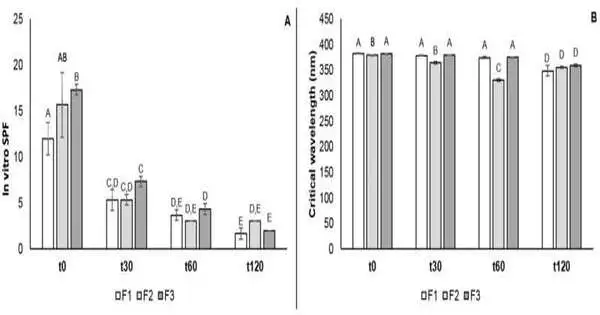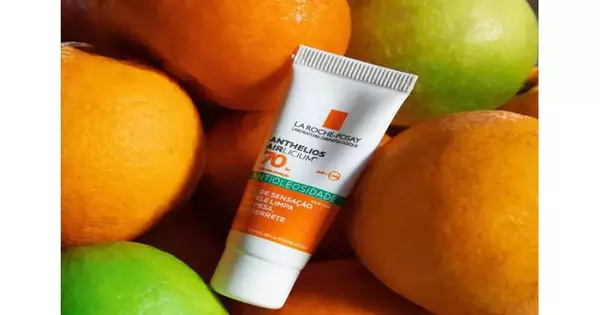A study on the effects of combining two common ultraviolet light filters, ethylhexyl methoxycinnamate (against UVB) and avobenzone (against UVA), with the active antioxidant rosmarinic acid was published in the journal Cosmetics.
By adding rosmarinic acid at 0 percent, a very small amount when compared to those of conventional UV filters, the research team improved the sunscreen’s photoprotective efficacy. They believe their research indicates that adding natural molecules with antioxidant properties to sunscreens may reduce the amount of conventional UV filters in the finished product while also adding other useful properties.
The performance of the product increased without the need to raise the levels of the active ingredients, resulting in a decrease in the quantity of synthetic chemicals released into the environment as well as the amount of sunscreen required to protect a given area of skin.
“Our photoprotective system research is largely concerned with evaluating prospective sunscreen improvement options. We’re interested above all in developing ways to boost sunburn protection while also enhancing the stability of the product so that it remains safe and effective for longer,”
Pharmaceutical scientist and biochemist André Rolim Baby, last author of the article .
The sun protection factor (SPF) increased by 41% in in vitro and clinical studies. Sunburn protection increases with increasing SPF levels.
A further benefit of adding rosmarinic acid was the addition of antioxidant activity to photoprotection, allowing the product to be used, for example, in antiaging cosmetics.
“The primary objective of our study on photoprotective systems is to assess potential sunscreen improvement techniques. The last author of the article and a professor at the School of Pharmaceutical Sciences (FCF-USP) at the University of Sao Paulo in Brazil, André Rolim Baby, said, “We are primarily interested in ways to increase sunburn protection while also improving the stability of the product so that it remains safe and effective for longer.”.
“We’re also looking for products or systems that have less of an impact on the environment and ways to reduce the amount of conventional filters by incorporating natural ingredients that improve the formulation. We’re also very interested in mapping the other cosmetic properties of photoprotective molecules, like their ability to fight off free radicals and their ability to safeguard biomarkers in the topmost layers of the skin.”.

Photographstability test. Before and after exposure to radiation, (A) critical wavelength (nm) and (B) in vitro sun protection factor (SPF) Samples that share a letter are statistically equal (Tukey test: p 0.05). No irradiation (t0), irradiation for 30 minutes (t30), irradiation for 60 minutes (t60), and irradiation for 120 minutes (t120). Ethylhexyl methoxycinnamate (F1) contains 10 % by weight of avobenzone and 5 % by weight of rosmarinic acid, while F2 and F3 contain 10 % by weight of avobenzone and 2 % by weight of rosmarinic acid, respectively. Cosmetics (2023) is credited. Cosmetics 10010011 DOI: 10.3390
Multifunctional compound
The investigation was a component of a project to map the chemopreventive characteristics of various UV filters.
Along with being an antioxidant, rosmarinic acid is a naturally occurring polyphenol antioxidant that is present in rosemary, sage, peppermint, and many other herbal plants. It also has antiviral, anti-inflammatory, immunomodulatory, antibiotic, and anticancer properties.
The research team highlighted rosmarinic acid’s advantageous effects as a food supplement, such as an improvement in skin firmness and wrinkle reduction, in a review article that was published in 2022 in the journal Nutrients.
According to Baby, “in another investigation, we discovered potential benefits of rosmarinic acid for skin surface hydration, reinforcing the need for more study on the substance in the field of cosmetology.”
In the study published in Cosmetics, a Labsphere UV2000S Ultraviolet Transmittance Analyzer was used to measure SPF and the critical wavelength in order to determine photoprotective efficacy.
More information: Maíra de Oliveira Bispo et al, Photoprotective Efficacy of the Association of Rosmarinic Acid 0.1% with Ethylhexyl Methoxycinnamate and Avobenzone, Cosmetics (2023). DOI: 10.3390/cosmetics10010011





